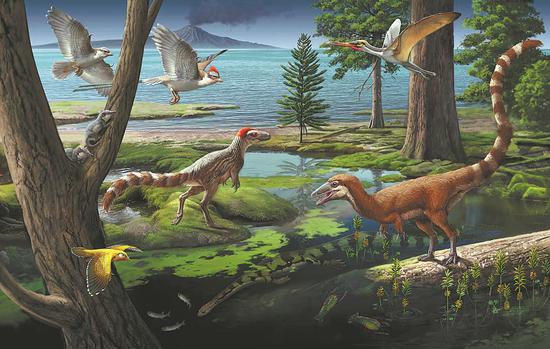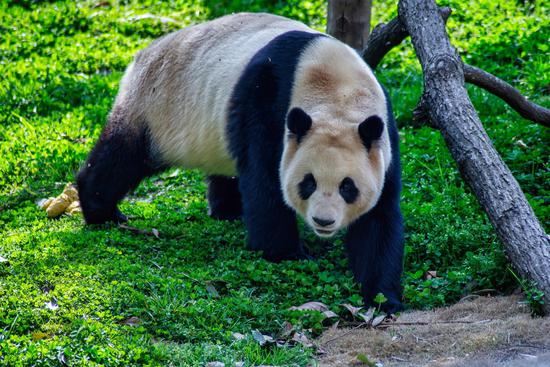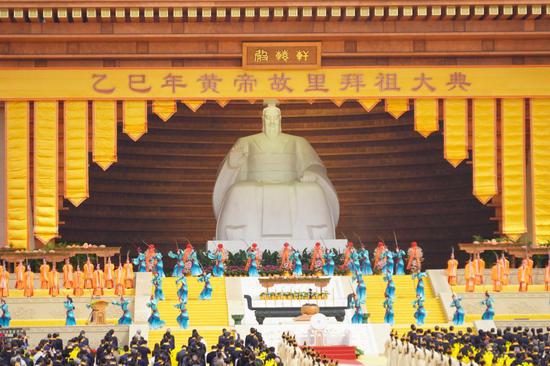
A simulated picture of the two dinosaurs walking, Sinosauropteryx lingyuanensis (right) and Huadanosaurus sinensis (left), found in Lingyuan, Liaoning province. (Photo by Zhao Chuang/For China Daily)
Chinese scientists have identified two new dinosaur species in Northeast China, shedding light on the evolution of small, feathered theropods and the remarkable diversity of the 125-million-year-old Jehol Biota.
The research, published in the National Science Review, details the discovery of Sinosauropteryx lingyuanensis, a new species, and Huadanosaurus sinensis, a new genus and species, both found in Lingyuan, Liaoning province.
A key finding of the study reveals the first direct evidence of dinosaur-mammal predation in this ancient ecosystem. The fossil of Huadanosaurus sinensis contained the remains of two mammals: a complete skeleton of a eutriconodont and fragments of a eutherian.
"Huadanosaurus had robust jaws and powerful neck muscles, suggesting it could swiftly kill prey through its strong biting force, enabling it to hunt mammals efficiently," said Qiu Rui, a lead author and associate researcher at the Natural History Museum of China.
This predatory behavior contrasts with other related dinosaurs. Sinosauropteryx prima, which was about 1 meter long, preyed on lizards, while the larger Sinocalliopteryx gigas, at 2.4 meters in length, consumed dromaeosaurs. This division of hunting strategies within a single dinosaur lineage is considered highly unusual.
The study also revises the classification of these feathered dinosaurs, reinstating Sinosauropterygidae as a distinct group. Previously, they were grouped under Compsognathidae, a classification now deemed inaccurate.
"Our analysis of 504 theropod species shows that Jehol's sinosauropterygids form a unique branch at the base of Coelurosauria," said Wang Xiaolin, a researcher at the Institute of Vertebrate Paleontology and Paleoanthropology of the Chinese Academy of Sciences and a corresponding author of the study.
The researchers connect the diversification of these dinosaurs to tectonic shifts that occurred 125 million years ago. The destruction of the North China Craton created isolated rift basins, intensifying competition among species.
"In most Mesozoic ecosystems, a single dinosaur lineage occupied one niche. But here in Liaoning, sinosauropterygids evolved three hunting strategies, while distantly related groups like dromaeosaurs and tyrannosaurs overlapped in similar roles," said Zhou Zhonghe, a researcher at IVPP and a co-author of the study.
This "diversification within lineages, competition between lineages" model explains the extraordinary diversity of the Jehol Biota, surpassing other known dinosaur ecosystems, researchers said.
The findings highlight the crucial role of China's fossil-rich regions in understanding evolutionary history. The research was supported by the National Natural Science Foundation of China and the Chinese Academy of Sciences.


















































 京公網安備 11010202009201號
京公網安備 11010202009201號